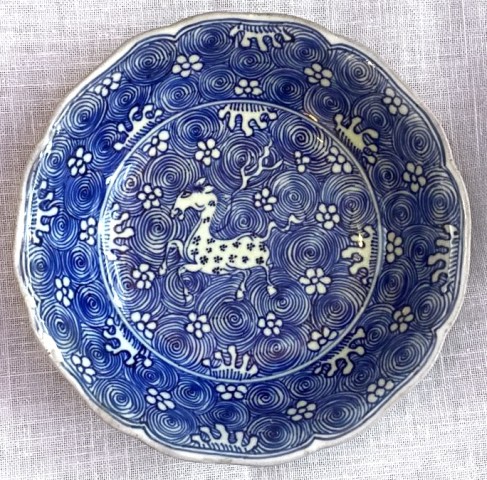BG89
Of circular form with a foliate eight-lobed rim, decorated in the linear style in underglaze blue, the well painted to the centre with a dappled 'Heavenly Horse' prancing amidst cresting swirling waves and prunus blossoms, the deep sides similarly decorated to both the interior and exterior, the exterior with an additional wave pattern band above the foot, the glazed base with an apocryphal with six-character mark of Jiajing within a double circle in underglaze blue.
Literature
For two comparable examples please refer to 'Leaping the Dragon Gate: The Sir Michael Butler Collection of Seventeenth-Century Chinese Porcelain', Canepa and Butler, figs. III.2.5a.b., and III.2.7. The first is of similar lobed form to ours, bears the design of a horse prancing among crashing waves, and also bears an apocryphal mark of Jiajing. The second is similar to the present dish in form and size, with a strikingly similar spiral wave pattern, but has a carp as the central creature. Both are dated to the Ming Dynasty, Chongzhen reign (1628 - 1644).
Dishes such as this were coveted by both the domestic and export markets. In 'Leaping the Dragon Gate', the author notes that no fewer than 36 saucer dishes bearing a design of a horse among swirling waves, and even more with comparable designs, were recovered from the 'Hatcher Wreck' of c.1643. These goods were likely to have been intended for the Dutch and Southeast Asian markets. Meanwhile, there is a comparable dish in the Sir Percival David Collection that was produced for the domestic market, specifically the Kuang family, cyclically dated 1644-1645.
Also see: Sheaf & Kilburn 'The Hatcher Porcelain Cargoes, Complete record', (1988, Phaidon, p. 66).

